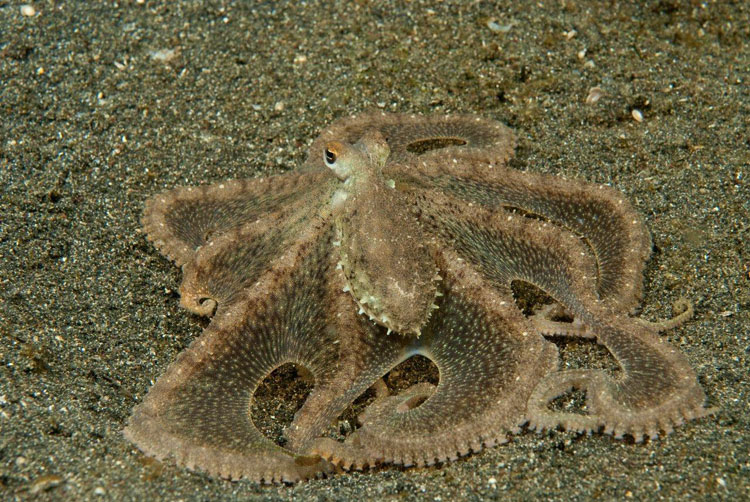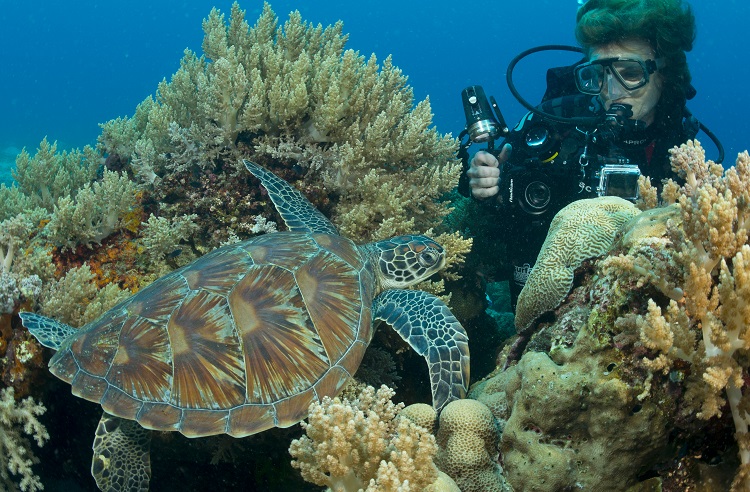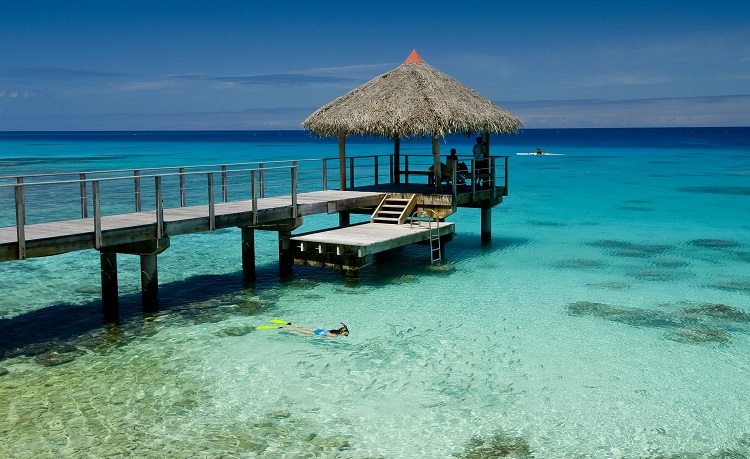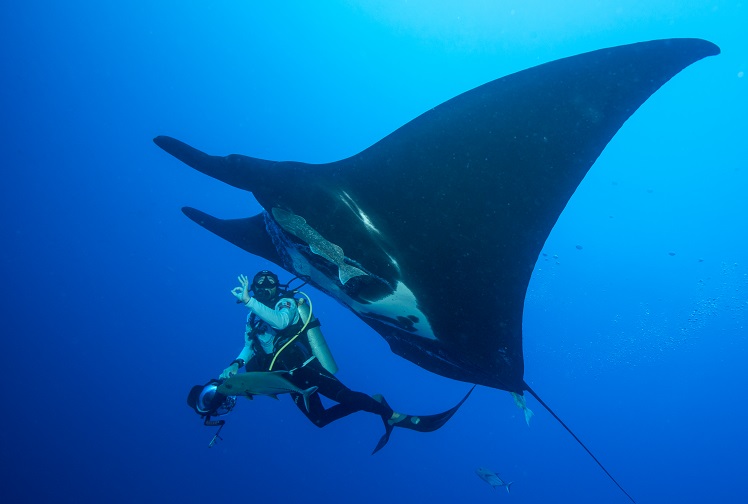White V Octopus hunting prey
15-Jan-2013 Back to Image Gallery
It’s always a thrill to capture an image of a species new to science like this currently named White V octopus which has been previously recorded recently only in Indonesia but it is even more exciting to capture an image of marine life behaviour. This octopus is spreading its webbed arms over prey to prevent it from escaping before it can be captured by the many suction disks that now face towards the victim. Behaviour images are the most treasured but also the most difficult to achieve as our time underwater is so limited. Follow any octopus however and the chances are you will see natural behaviour as these creatures are often inclined to accept your presence and resume their normal activities among the reef.
Photo Data: Location: Lembeh Strait, North Sulawesi, Indonesia. Genre: Macro. Photo Data: Nikon D200, Nikkor 60mm lens, Seacam Housing, Dual Seacam Strobes, and Manual Exposure Mode. ISO 100 Exposure f13 @ 1/60th sec. Image by Kevin Deacon.
Photo Hints: Take the time to allow the creature to observe you and conclude you are not a threat. Keeping your distance at first and minimising your movements will help although it can be compelling to move in right away and get a shot in case the subject disappears into the sand or the reef. If you can’t resist the urge that’s ok, just invest the time to hang out with your subject and you may find it becomes much more interesting. Equipment Comments: A zoom lens is often a better choice if you are targeting octopus as subjects as these animals vary quite a bit in size. The narrow view of a macro lens may force you to back up and shoot through more of the water column than is ideal for sharp pictures. Muck dive sites are also ideal habitats for octopus and typically less clear than oceanic reef sites. Reduced visibility will be an issue if your zoom lens is not a wide angle zoom.
Interesting Facts: The White V Octopus is a new and undescribed species so it is not yet scientifically named, hence Octopus sp. The area known as the Coral Triangle encompasses the tropical Indian and Pacific Oceans and includes the island nations near the equator ranging east to west such as the Solomon Islands, Papua New Guinea, Timor & Indonesia. By the time you reach the tip of the triangle in the far north Indo Pacific you will have included more of Indonesia, The Philippines, Borneo & Malaysia. This region is the habitat of the greatest variety of tropical marine species in the world and many new species such as this White V Octopus are being discovered due to improved availability of dive infrastructure such as dive resorts, live aboard dive boats, scientific research and observations by underwater photographers and dive guides with a highly developed knowledge of local marine life..



